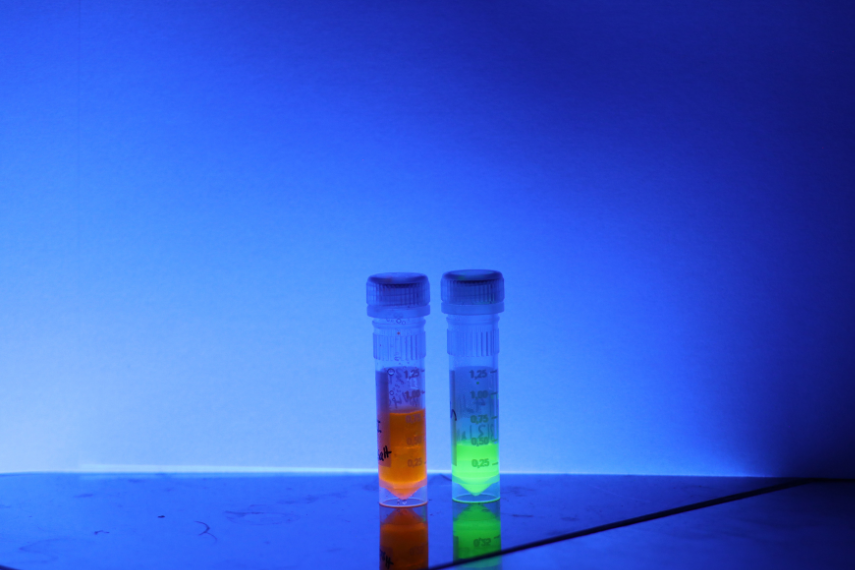How Clean is Your Tap Water?

Although water is an essential in our daily lives, many of us take clean water for granted. Testing tap water for contaminants is an important step in ensuring its safe use. Lead is a toxic substance that can cause severe illness and damaging effects on the environment. Due to its prevalence in manufacturing over many years, it is now considered a widespread contaminant in the air, ground, and water. Being able to accurately and easily test for lead contamination is crucial for preventing lead exposure. Traditional testing methods can be costly, but an inexpensive alternative may help make lead testing less expensive and more accessible.
Developing a Novel Sensor
Dr. Richard Manderville, a Professor in the Department of Chemistry at the University of Guelph, and his research team want to develop a better way to test for lead in tap water. PhD student Ryan Johnson spearheaded the research, working together with Lucas Bycraft, recipient of the Morwick Undergraduate Student Research Assistantship (USRA) in Water Research. The team looked to a familiar but unconventional molecule for their sensor: DNA. DNA is an inexpensive material that also has a negative charge, meaning that it will attract positively charged ions in tap water. This includes lead, but also ions like potassium, calcium, and magnesium. In order to be effective, the sensor needed to have a strong preference to bind lead over other ions. In regions with hard water, like Guelph, this presents an extra challenge.
Manderville’s team focused on finding a way to selectively bind lead to their DNA sensor in the presence of other ions. The double helix structure of DNA that we’re familiar with can fold into a variety of shapes. A specific form of DNA was found to have a high affinity for binding lead. When lead becomes bound, the structure of the DNA complex changes and a fluorescent probe attached to the DNA becomes strongly emissive. The fluorescence intensity can be measured in the lab before and after a water sample is tested, and an increase in the fluorescence level indicates the detection of lead.
To see how well the sensor performed in real world scenarios, tap water spiked with lead was tested. The tap water also contained high concentrations of potassium, which is known to displace lead in most DNA-based sensors. Despite the additional ions, the sensor was still able to detect lead at concentrations 1000 x less than potassium, showing that the sensor is very sensitive to lead detection. “Most sensors are developed under ideal conditions,” explains Manderville. “This was an important breakthrough.”
Making Water Testing More Accessible
Manderville and his research team are now working on a new version of their sensor that will make water testing easier and more accessible. The new design will involve a colour change that corresponds to lead detection: the sample remains green if no lead is detected, and orange if lead is present, as depicted in the photo above. Without the need for specialized equipment, the sensors could be used for household testing in areas where water contamination is a concern.
Lucas Bycraft feels his participation on the project was a valuable experience. “My research experience thanks to the Morwick USRA was extremely beneficial in more ways than one,” he says. “Not only did I gain a greater understanding of chemistry and toxicology concepts, helping me to graduate from Biomedical Toxicology with distinction, but my work was also used in multiple published works. These distinctions, directly resulting from my USRA experience, helped give my application an edge to land me a place as a student in the PharmD program at the University of Waterloo, which I am excited to begin this January 2024.”
This story was written by Carley Miki as part of the Science Communicators: Research @ CEPS initiative. Miki is a PhD candidate in the Department of Physics under Dr. John Dutcher. Her research focus is on understanding the forces and interactions between soft, sugar-based nanoparticles and how they differ when charged.
This work is supported by the National Sciences and Engineering Research Council (NSERC) of Canada and the RNA Innovation program, University of Lethbridge, and the University of Guelph Morwick USRA in Water Research for student scholarships. Computational resources provided by the Digital Research Alliance of Canada and the Canada Research Chair program.
Johnson, R. E., et. al. Unlocking Pb2+ Sensing Potential in a DNA G‑Quadruplex via Loop
Modification with Fluorescent Chalcone Surrogates. ACS Sens. 2023, 8, 4756-4764. doi: https://doi.org/10.1021/acssensors.3c01866

Department of Chemistry

Biomedical Toxicology

Manderville Group